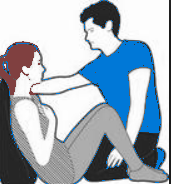This weekend I did not fly and that would normally mean I don’t blog either! However this weekend I attended the first Aviation related First Aid (Level 3) and Fire Safety (Level 1) training organised by the BMAA for its members. It was run by Barry Murkin from www.firstsafetytraining.com, I didn’t really know what to expect, but thought they would be a good life skill to have and an opportunity to visit the BMAA office too. So, I reached out to my friend Simon and we both enrolled on the training and as this was a good 2 ½ hr drive away we booked up a hotel nearby too.
When we booked up the training we did not know who would be running the it, Barry the instructor is a Microlight and GA pilot who I have flown with once and operates out of the same airfield as Simon and I, Chatteris. He is ex RAF too and likes things to be done in a very ordered way, not a bad thing, and as we were to find out later in the evening he tells a good story too!
The first shock of the day started long before the training when my alarm rang and I realised that there are two 5 O’clock in a day! Simon arrived promptly at 06:00 and we drove down to the BMAA’s head office in Deddington, a small village in Oxfordshire, where we were met by Rob Mott from the BMAA. Rob acted as the facilitator for the training and insured the whole thing ran without a hitch.
Day one was Aviation First Aid, this was a normal Level 3 recognised training course which is required by employers, however the examples and applications were tailored to the Aviation world. We not only covered the aims of First Aid (Preserve life, Prevent the condition worsening and to Promote recovery) but also lifesaving skills such as CPR, Rescue breaths (30:2 ratio), Recovery position, W position, treatment for Shock, Choking etc

It was very beneficial to try CPR on a dummy which mimics the pressure needed and to also use a Defib too. It hasn’t made us paramedics, but has given us the confidence to be able to at least try and help preserve a person’s life until the emergency services arrive.

The course is assessed to OFQUAL standards and official certification is provided for those who pass.
In the evenings those who were staying over or were local all met you at a Chinese which was local to our hotel and a fun night was had talking about flying and things.
The following morning, we arrived back at the BMAA office for the Aviation Fire Safety training. This was another approved course, again this was a standard course, but with aviation examples, in the morning we learnt a little about the responsibilities we all have too each other’s safety under the law, the types of fire and what a fire is. We covered the 3 three factors needed to keep it burning Heat, Fuel and Oxygen. We then went through the different classes of fires and how each one should be tackled and what fire extinguisher should be used. We also covered the use of Halon in the cockpit of an Aircraft. Later in the day we did Hots training at Enstone Airfield where we were given different controlled and simulated real fires to tackle, we had to raise the alarm, select and test and then use the correct fire extinguisher, this was not only great fun but now we all know exactly what to expect when we pick a fire extinguisher.
It was a long two days and back at work Monday it doesn’t feel like I have had a weekend off, but I believe the skills I have learnt are more important than one weekend and would recommend it to anyone pilot or not.

